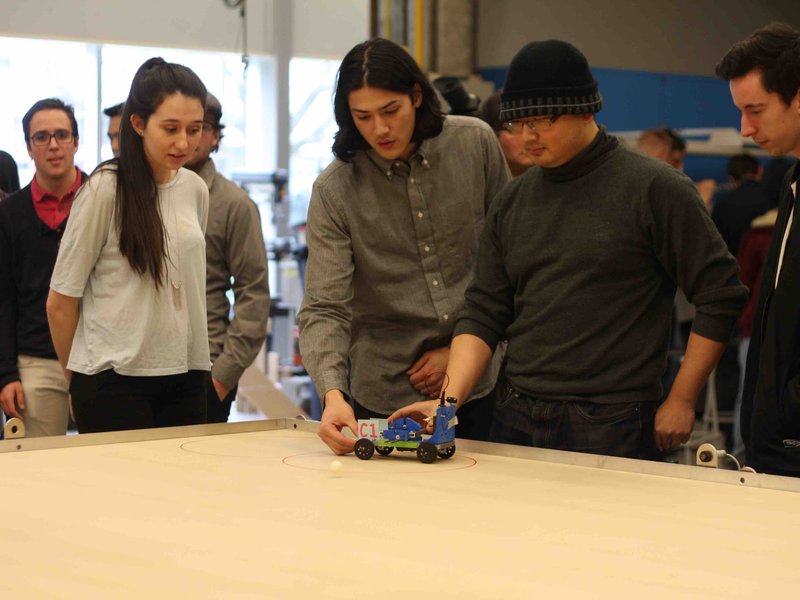If you’ve ever walked by the engineering building by the cairn, you’ve probably noticed Room 1180. It's a large workshop usually filled with benches and students working. On Wednesday, it was host to a miniature simulation of 2005’s Cassini mission landing on Titan — Saturn’s largest moon — and boy, was it exciting.
Workbenches were replaced by one large, 160-square foot table with a funnel in the middle. Students, cameramen, TAs, teachers and friends gathered around the table while setting up for the test. This design competition is the first of three projects for MECH 223.
Students were assigned to groups based on results from personality tests they took, and were tasked to design “a launcher and an orbiter/lander spacecraft to explore the hydrocarbon lakes on Titan.” In English, this means they had to build a robot that would shoot a “probe” (in this case steel ball) across the solar system (the table) onto Titan, with the funnel simulating moon's gravity.
Those who have never been to an engineering project competition may want to change that. The atmosphere was both exciting and nerve-wracking. All around the room, students were either making last-minute modifications to their inventions — laptops in one hand, screwdrivers in the other — or they were talking to visitors about how they decided on their design.
Students showed their creativity in both the design process as well as in the naming of their groups and robots. One group named R2 called their robot D2, while group A5 provided a plethora of trivia on their group all centred on their apparent love for the number five.
The test itself was serious business. Teams placed their robot at one of the two Earth sites on opposing sides of the table. Only two group members were allowed in the set up area. Usually another group member would go to the other side of the table and help with the adjusting of the robots angle. Then the projectile would be released and breaths would be held anxiously as the projectile made its way to Titan. If released to slowly, the probe would end up stuck in space. If released too fast, as in some unfortunate cases, the probe entered the funnel but quickly spun right back out, to the dismay of the group and the crowd.
But even if the projectile reached its target, there was still another component to take care of. Points in the competition were awarded based on a combination of spacecraft design and landing performance. With landing performance, including how long the probe stayed in the funnel, the longer the better. After each projectile launch, the crowded room listened carefully to the “swish” of the projectile in the funnel, hoping for a long time before the beep that symbolized a successful landing on Titan.
All in all, it was a creative and practical display of what MECH 223 students have been learning in class the past month, and a spectacle for those who watched.
Share this article
First online






